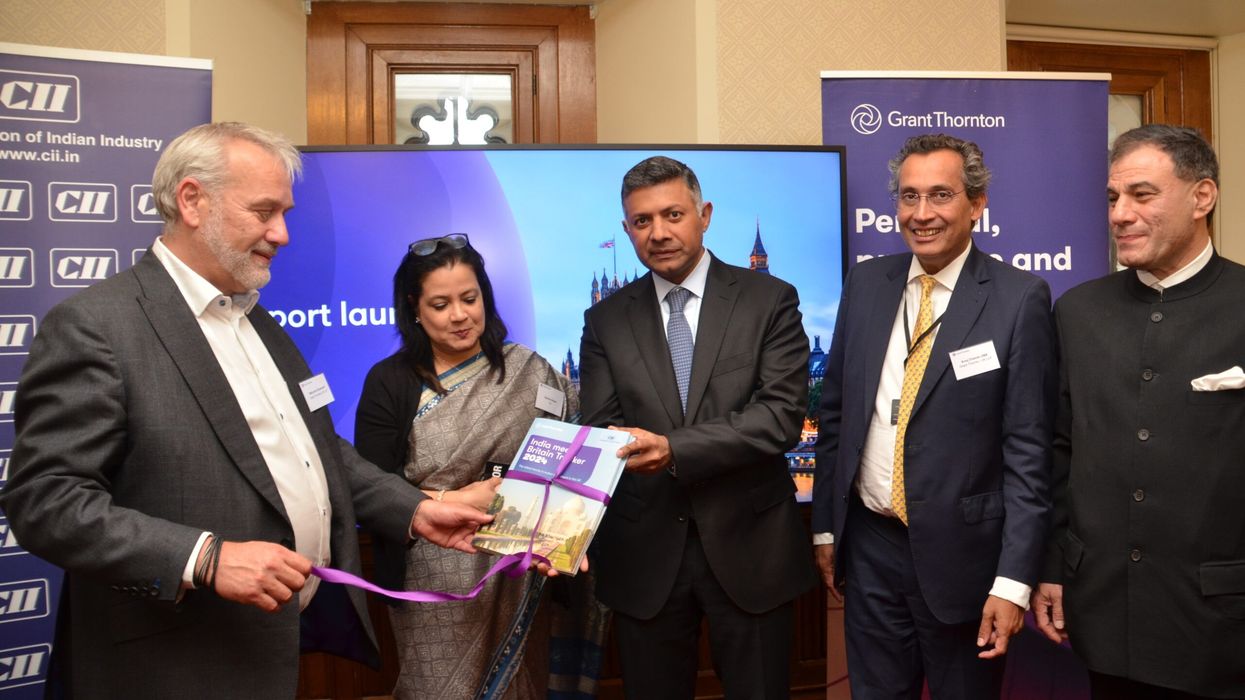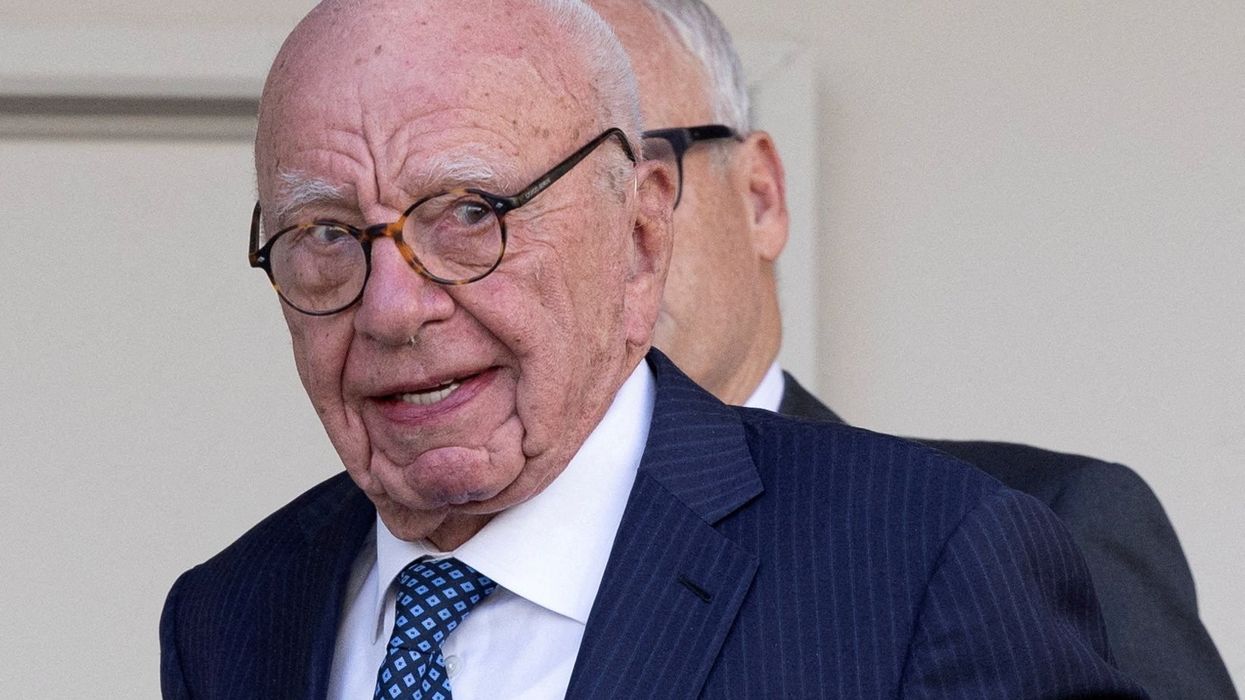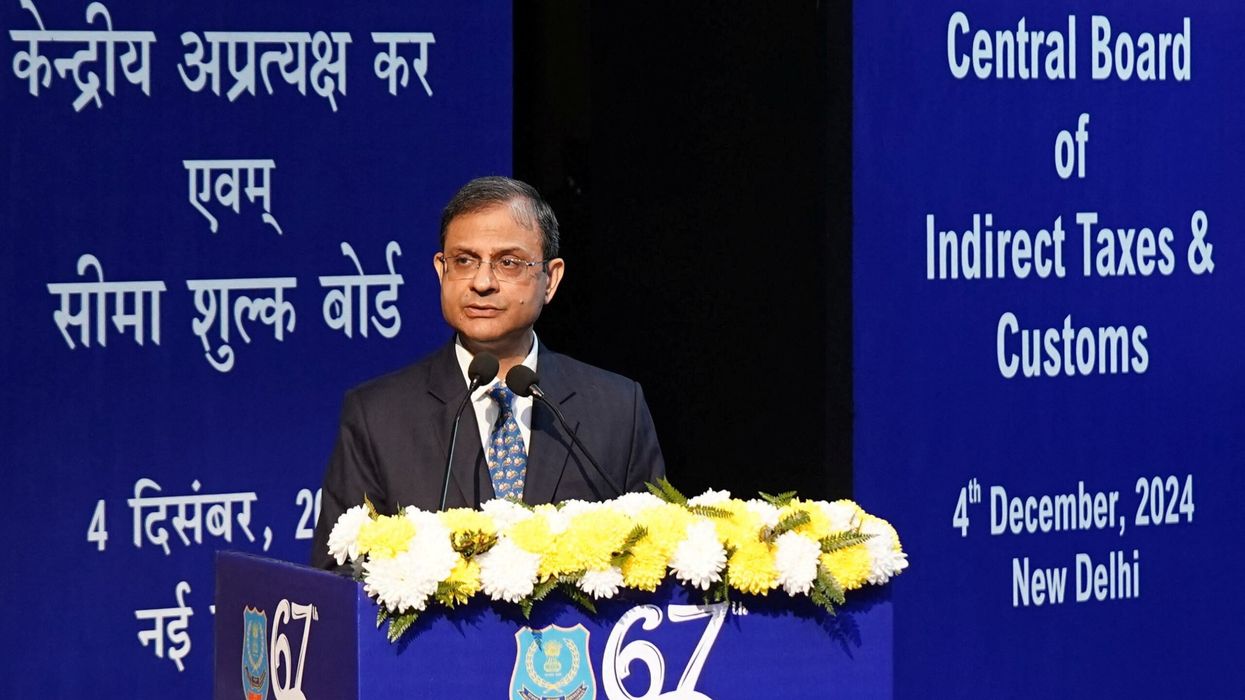LISTENING to Reform leader Nigel Farage and other politicians on the need to cut immigration, the average voter would have no idea of the extent to which the British economy is being propped up by companies from India.
This is one reason why Vikram Doraiswami, the Indian high commissioner to the UK, says more should be done to publicise the annual India meets Britain Tracker report from Grant Thornton.
The 2024 report, compiled in partnership with the Confederation of Indian Industry (CII) – the equivalent of the Confederation of British Industry (CBI) – was released in the House of Lords last Tuesday (11). Farage either does not know or would not like to be told of the jobs – mostly for white people – that Indian companies have created in the UK, or taxes worth over a billion pounds, they pay to the UK Treasury.
Anuj Chande, partner and head of the South Asia Group at Grant Thornton, set out the headline figures in the 2024 Tracker report. It is the 11th report of its kind and “includes Indian-owned corporates with operations headquartered or with a significant base in the UK, with a turnover of more than £5 million, year-on-year revenue growth of at least 10 per cent and a minimum two-year track record in the UK, based on the latest published accounts filed as of 31 March 2024, where available”.
Anuj Chande
Basically, thousands of white Britons depend on Indian companies for their livelihood – not that this would ever be acknowledged by the likes of Farage. It is only Eastern Eye that reports year on year on the Tracker’s findings – they get no coverage in the mainstream media.
Prime minister Rishi Sunak has been pilloried for being rich and “out of touch with ordinary voters”. The reality is Indian IT companies (such as Infosys, the company co-founded by Sunak’s father-in-law) are making a valuable contribution to the UK economy.
Chande summed up the Tracker’s analysis for 2024: “Our 2024 research identified a record 971 Indianowned companies operating in the UK, up from 954 in 2023, with combined revenues of £68.09 billion, a strong increase on the £50.5bn reported in 2023. This growth can be attributed, in part at least, to the increasing normalisation of the wider business environment as the long tail of Covid disruption subsides.”
He added: “The 971 companies in our research employed 118,430 people, up from 105,931 in 2023, and paid £1.17bn in corporation tax, compared with £944 million in 2023. This year’s listing of fastestgrowing companies also delivers strong results. For the first time ever, we identified 100 Indian businesses growing at a rate of 10 per cent or more. The inclusion this year of automotive manufacturing giant Jaguar Land Rover in the list of fastest-growing companies saw the combined turnover of the 2024 Tracker companies rise to £42.8bn, an increase of over 70 per cent on the combined turnover of £25bn for 2023 Tracker companies.”
Vikram Doraiswami
He said: “The 2024 Tracker companies achieved an average growth rate of 48 per cent compared to 71.3 per cent in 2023. The three fastest-growing companies were Interglobe Enterprises (UK) Ltd (323 per cent); SAR Overseas Ltd (319 per cent); and Sterlite Technologies UK Ventures Ltd (244 per cent). The following companies all appear in the Tracker for the ninth time: Accord Healthcare Ltd; Bharat Forge International Ltd, Milpharm Ltd; and Secure Meters (UK) Ltd. Route Mobile Ltd makes its seventh appearance.”
Chande explained: “Over the past year, a sluggish global economy and deteriorating international security have created a challenging environment for businesses everywhere. Despite this, the Indian economy continued to flourish. Annual economic growth of over eight per cent now puts the economy on track to become the third largest in the world within the next four years. On top of this, a free trade deal between India and the UK – much negotiated but yet to be concluded – has the potential to increase bilateral trade to more than $100bn (£79bn) by 2030. The enduring India-UK partnership promises opportunities for growth and prosperity in both countries. There’s much to look forward to.”
Farage would probably not like to be told the 100 top companies paid £473.56m in corporation tax, compared with £449.5m in 2023. And out of the 100 companies, 42 have turnovers between £5-25m; 51 between £25-250m; and seven exceeding £250m. The top 100 include: St James Court Hotel (5); State Bank of India (27); Punjab National Bank International (67); ICICI Bank (76); Cipla (EU) Ltd (85); and Tenon FM Ltd (96).
The report says that “since the Tracker started 11 years ago, Technology, Media and Telecoms (TMT) has been the largest sector in terms of the number of companies. It retains the top spot this year but has extended its lead over the engineering and manufacturing sector in second place.”
Shehla Hasan
Not that this fact registered with the former Tory MP Nadine Dorries, who has attacked Sunak for wearing expensive shoes.
The top sectors for the 971 companies have been broken down into sectors as follows: technology, media and telecoms (27 per cent); manufacturing and engineering (20 per cent); pharmaceuticals and chemicals (16 per cent); hospitality and leisure (10 per cent); automotive (7 per cent); financial services (6 per cent); energy (5 per cent); business services (4 per cent); food and beverage (3 per cent); retail (1 per cent); and real estate (1 per cent).
The biggest employers are: Jaguar Land Rover, owned by Tata Motors (38,379); Tata Steel Europe (20,300); Firstsource Solutions (5,596); Airtel Africa (3,907); HCL Technologies UK (2,849); TVS Logistics Investment (2,728); Hinduja Global Solutions UK (2,028); Tenon FM Ltd (1,772); GH Holdings (1,510); Norlake Hospitality Ltd (1,046); and Target Group Ltd, owned by Tech Mahindra (1,003).
The performance of the 971 companies is set in the context of how the Indian economy has been performing. “The global economy continued to face challenging headwinds in 2023,” the report points out.
“As pandemic disruption abated, the international security situation worsened. India was one of the few major economies in this challenging environment to show strong economic growth. Figures for the 12 months to December 2023 show annual economic growth of 8.4 per cent. In the same period, the UK growth rate was minus 0.2 per cent, mirroring widespread negative or low annual growth in many G20 economies. Figures from the IMF show that India is now the fifth largest economy in the world (behind the US, China, Germany, and Japan), with GDP worth $4,112bn (£3242bn).”
It also says: “During 2023, India’s presidency of the G20 helped underline the country’s growing presence on the world stage. More than 30 heads of state and government from around the world, including Rishi Sunak, attended the G20 summit in New Delhi in September 2023.
“India’s global influence is set to expand as the country’s economic clout grows. With the OECD forecasting GDP growth of 6.5 per cent, India will be the fastest-growing economy in 2024. It is set to become the third-largest economy in the world by 2028.
“With a population of over 1.4 billion, India is now the largest country in the world. With 40 per cent of its population currently under 25, the country benefits from a ‘youth demographic dividend’ – lots of young workers, many highly educated, ready to be part of the country’s rapid economic growth. On the flip side, the profile of the population means the Indian government faces a huge task in creating enough jobs.”
In 2023, India was the source of 118 Foreign Direct Investment [FDI] projects in the UK, creating 8,384 new jobs, according to figures from the Department for Business and Trade.
This is the second year in a row that India has been the second largest source of FDI projects in the UK after the United States. In the West Midlands, India is now the region’s leading source of FDI.
India is now such an important source of FDI to the West Midlands that the region has sent delegations to India to cement existing ties and encourage further investment.
People like Farage seem unaware that “the Indian diaspora in the UK has been described as a ‘living bridge’ between the two countries. That bridge is the most likely reason both nations will continue to benefit from a mutually supportive and enduring partnership. Linguistic and political ties and a diaspora embedded in local culture mean the UK continues to hold powerful appeal for Indian investors. The successful conclusion of negotiations on a free trade agreement (FTA) could add a new layer of prosperity for both India and the UK.”
There is disappointment that Sunak, who has perhaps tried to please the right-wing of his party too much, has been unable to clinch the FTA. The report states: “Negotiations on the long-anticipated UK-India FTA, a huge economic opportunity for both countries, continued throughout 2023. Nevertheless, despite a fourteenth round of negotiations in January 2024, an announcement remains elusive.”
The FTA negotiations continued against a backdrop of significant official visits, particularly UK delegations visiting India, underlining the determination of the two countries to continue strengthening their relationship. The report says: “The standout visit was that of Rishi Sunak to the G20 summit in New Delhi in September 2023.”
On Friday (14) last week, Sunak met Modi at the G7 summit in Italy. It was Modi’s first overseas trip since he returned to power, though with a reduced majority. In February 2024, Labour’s politicians, including the shadow foreign secretary David Lammy, visited New Delhi.
It remains to be seen how a new Labour government, if elected, will pick up the threads of the FTA.
Despite the continued growth in Indian investment in the UK there are certain concerns voiced by existing CII investors. The CII reports that members want to see more flexible rules around how they are permitted to use the Apprenticeship Levy, currently 0.5 per cent of overall wages for companies with an annual pay bill of over £3m. This reflects a general concern voiced by many businesses in the UK regarding the complexity of the Apprenticeship Levy.
In April 2023, the UK rate of corporation tax for companies with profits over £250,000 rose from 19 per cent to 25 per cent. While this makes it costlier to do business, the headline rate is still the lowest among the G7. The ‘full capital expensing policy’, announced by the UK government at the same time as the tax rate rise, means companies can deduct spending on investment from profits, reducing the tax they must pay.
From April 4, 2024, the salary threshold for the ICT visa, now known as the senior or specialist worker visa, rose from £45,800 to £48,500. Indian businesses report that this is making it difficult to bring in talent to address the shortage in tech skills (especially in AI) in the UK. Possible alternative visa routes for tech workers who do not meet the minimum salary requirement include the India Young Professionals Scheme and the new post-study Graduate Route.
The new report
Shehla Hasan, director & UK head CII, said at the launch: “The report helps to change the perception of Indian companies as employment generators in the UK.
“The impressive growth of 1.8 per cent in the number of companies, over 40 per cent increase in revenue and almost 12 per cent increase in number of jobs created, and a 12 per cent increase in corporate tax paid by Indian companies is a testament that the UKIndia bilateral economic relationship is in fine fettle.
“This success has been achieved even without a normal FTA. The potential, which is immense, will be further unlocked should a formal agreement be agreed and signed.
“There is naturally immense expectation and excitement from businesses and people on both sides. Studies have shown that the GDP of both countries would increase because of the trade agreement, leading to job creation and higher bilateral trade.
“Today, Indian companies with operations in the UK have integrated themselves into the British economy, making their mark in industries ranging from technology and finance to healthcare and manufacturing. Their ability to adapt, innovate and forge meaningful partnerships has not only propelled their own growth, but has also enriched the economy of the UK and its regions, promoting job creation, driving investment and fostering a culture of diversity and inclusion.
“The India-UK bilateral relationship is based not only on economics, but on shared beliefs and values. It is our people-to-people and cultural links and our common democratic traditions that bind our two nations. The CII’s UK office, located in London, is 43 years old this year and is a key part of the CII international network. It is the CII’s first ever International Office, and has played a key role in bringing Indian and British businesses closer together.”
Hasan, who used to be the CBI’s head in India, said: “We will continue to work in this vibrant economic corridor and always endeavour to be a catalyst in taking the bilateral economic relationship from strength to strength. As we embark on this journey of discovery, let us not only celebrate the achievements of Indian companies in the UK but also recognise the invaluable role they play in shaping the future of both nations. May this study serve as a support to policymakers, investors and entrepreneurs alike, towards a future of collaboration, prosperity and mutual respect.”













